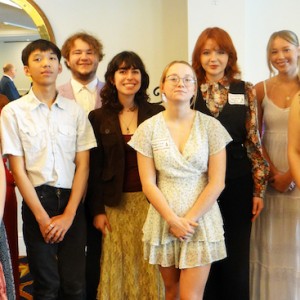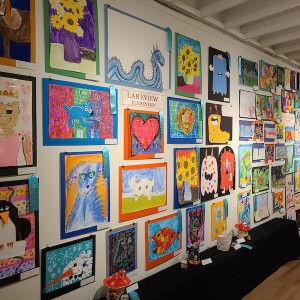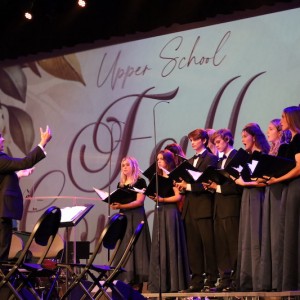Next to the principal and the GO-FOR-BROKE gym teacher, perhaps the most intimidating figure at any given school would be the librarian. Quiet and unassuming—some would even say mousy—their power lies in a simple, stony stare, bony finger upright against the lips in the universal gesture for “Shush,” with heavy undertones of grievous bodily harm should the warning be ignored. And in some Tolkien-esque alchemy, the library itself becomes extension of this literary wraith—musty and intimidating, unforgiving and unwelcoming, like that rich relative’s house full of shadows, silence and stuff you’re not supposed to touch.
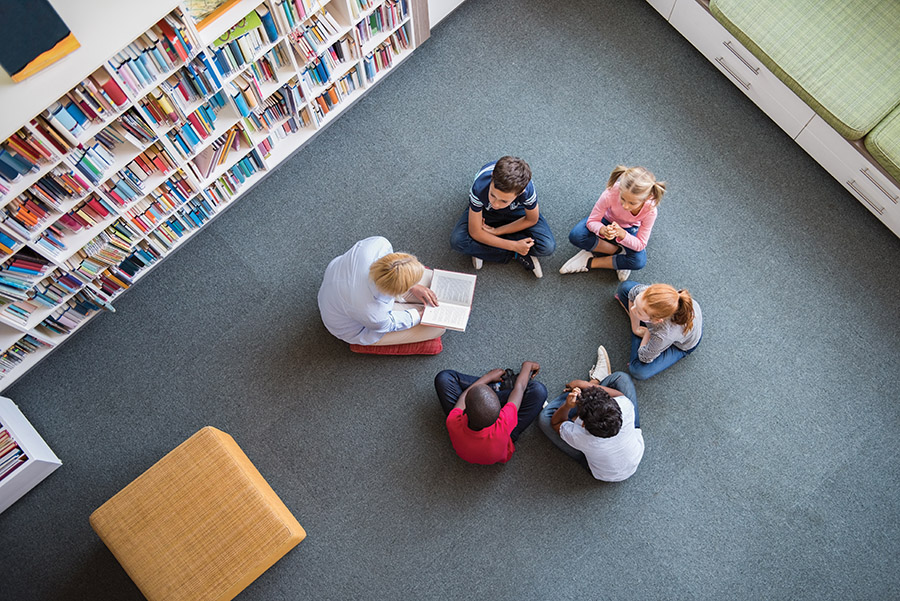
At least, that’s what a Catholic school in Kentucky in the mid-90s would have you believe. But the reality in modern day Sarasota and Manatee counties, where 16 libraries serve as 16 community hubs offering essential services, cultural programming and gathering space for the surrounding neighborhoods, paints a far prettier picture. “I love the idea that this out-of-date perception of libraries as book warehouses is going away,” says Ava Ehde, library services manager for the Manatee County Public Library System. “The key word has become public,” she says, with public libraries distinguishing themselves from academic libraries by framing themselves less as places of study and more as all-purpose spaces for coming together. “We’re reinventing ourselves,” says Sarabeth Kalajian, director of Sarasota County Libraries and Historical Resources. “There is incredible potential for individuals to pursue their dreams by using the resources of the public library.”
Make no mistake, public libraries still have all those inked-up and mangled trees that folks call books, and they have plenty of space for quiet study and reflection (the decibel level loosely enforced by a meandering security guard), but that’s just the tip of this benevolent iceberg. In terms of media, it’s no secret that movies and music have joined the roster, offering families and members a free alternative to costly subscriptions or services, but it’s the amount of programming and life services now offered that seem to define the modern day library. And in this region, public libraries are setting the bar. “We outpace our peers sometimes 10-to-1 in terms of the number of programs we have,” says Kalajian. “We do about 175 programs a month,” adds Ehde.
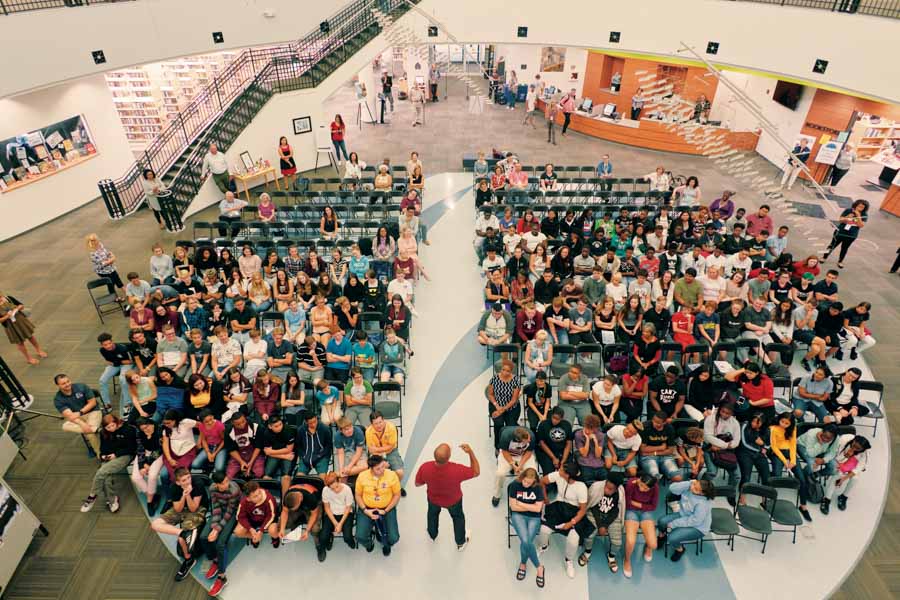
One of the biggest changes has been the addition of “creation stations,” where the library supplies the resources so members can explore creative outlets they otherwise would not have access to. Whether it’s a cutting edge concept like 3D printing, coding and robotics, or a retro craft like quilting or fabric art, equipment cost can often pose a barrier to entry. Creation stations get around that through providing communal machines for anyone to experiment with. And it quickly becomes a communal experience, says Kalajian, with younger, tech-savvy attendees showing older members their way around the computer, and them returning the favor when it comes time for the sewing bee. “It’s the coming together that’s important,” she says.
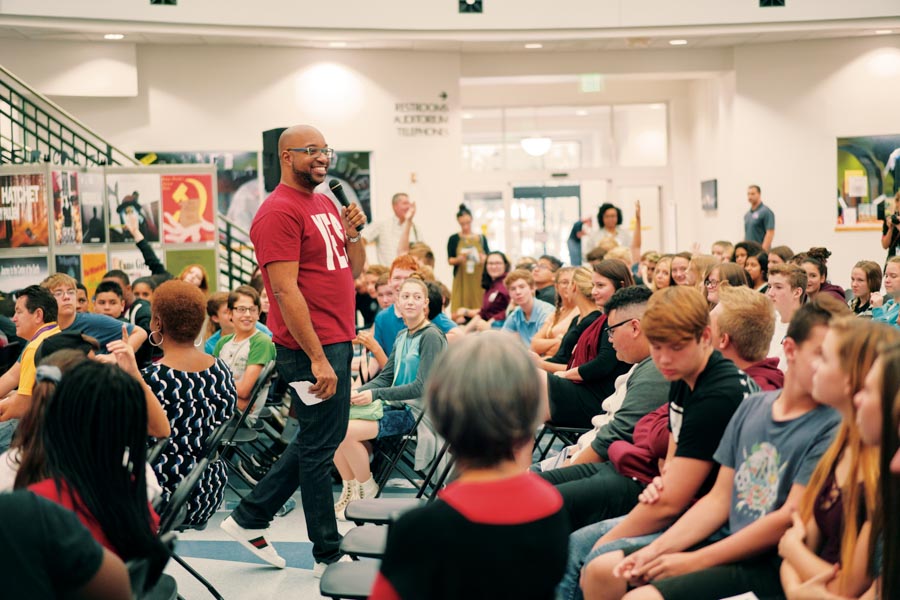
And with a breadth of programming, the library is able to appeal to almost any demographic, say Ehde and Glenda Lammers, assistant library services manager in Manatee County. The more senior generations enjoy the Creative Aging series, which offers six-to-eight week sessions on a variety of topics, from Sumi-e painting and digital photography to ballroom dance, depending on interest. And it becomes about more than a class, says Ehde. “They’re building community,” she says. “Being at the library counteracts loneliness or isolation.” A lecture and travel series has also proven quite the hit with the seasoned crowd. “People really are eager for that lifelong learning,” says Kalajian.
Teens remain difficult to reach—a truth as old as the first Stone Age tantrum—but even they get roped in by the annual recycled fashion show, seeing the budding stylists of the group repurpose odds and ends from home to create their own fashion line. In the weeks leading up to the show, the library becomes a hotbed of activity, offering classes on design and fabric art, as well as industrial sewing machines and a lab for the teens to work in. Families and children—still wide-eyed and ready to explore—enjoy perhaps the most options, with everything from scheduled story time and craft exercises to visiting musicians and authors bringing new experiences into the library for the kids while neighborhood parents build their own networks. At its peak, the library becomes almost more a community fair than a fixed monument to the written word. This past October, the award-winning author and poet Kwame Alexander came to Selby Library, where he put on a veritable show for more than 200 middle and high school students, uniting music and literature and leaving every student with a signed copy of his latest book. Between the call-and-response and the live jazz, Kalajian estimates it just might be the loudest event held in the library system to date. “It’s more active and engaged learning,” says Lammers, and a new program in the Manatee system will see lunchtime performances from musical artists, that families can attend and bring their own lunches or eat at the café.
But, importantly, at its base the library system maintains a support system that goes beyond what Ehde affectionately refers to as “random acts of culture.” Libraries become resources to help the elderly, the lonely, the disadvantaged and the lost make their way in a world that can sometimes feel unforgiving. Public computers play a big role, with staff helping members with career searches and job applications. And during tax season, experts are often on hand to help anyone who asks. If the library itself doesn’t provide the service, it often hosts a group that does, such as Whole Child Manatee or even counseling for veterans. Of course, sometimes what families need is just a day off, and the Sarasota and Manatee public library systems both have programs to offer day passes to museums and other cultural institutions like Mote Marine Aquarium and Selby Gardens, so no one has to be shut out entirely from the treasures in their own backyard.
More and more, libraries have transformed from places people go to simply check out books into community portals where the curious can find a stepping stone to checking out the world. If a member wants to explore the night sky, the library can acquire a telescope and loan it out. If a child wants to try her hand at a musical instrument, but the family can ill-afford an expensive piece of equipment that may not even catch on, the library can find a cello and make it available for all. Responsive and evolving, the neighborhood library can be just about anything its community needs it to be. “We’ve gone beyond books,” says Ehde. “This engine is fueled by a lot of heart.”





